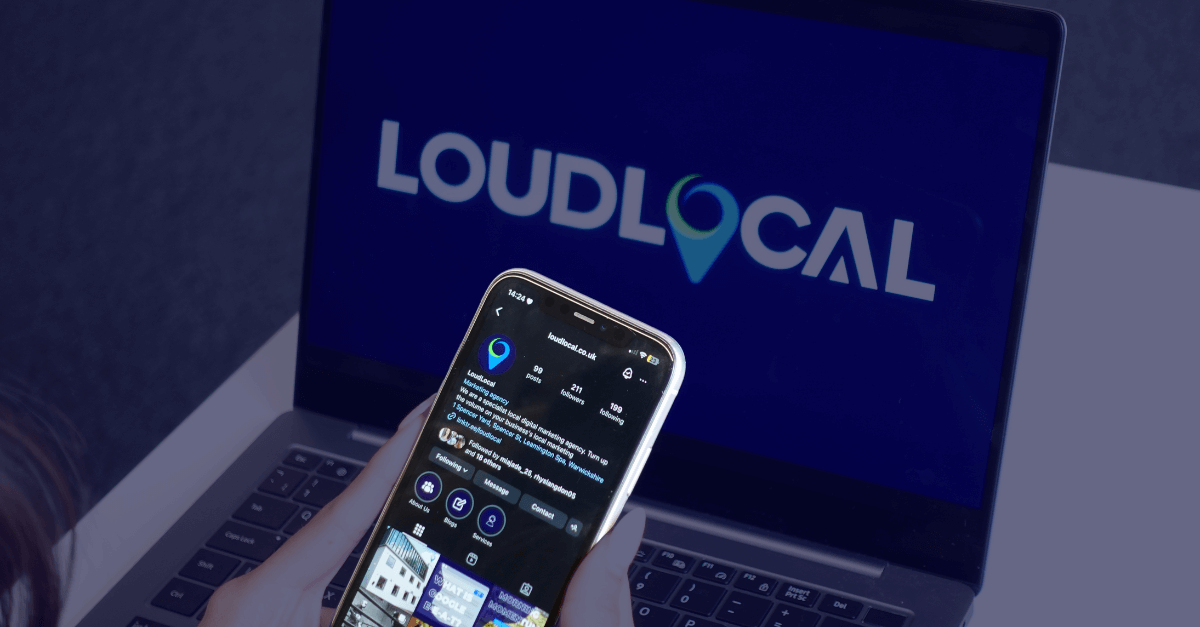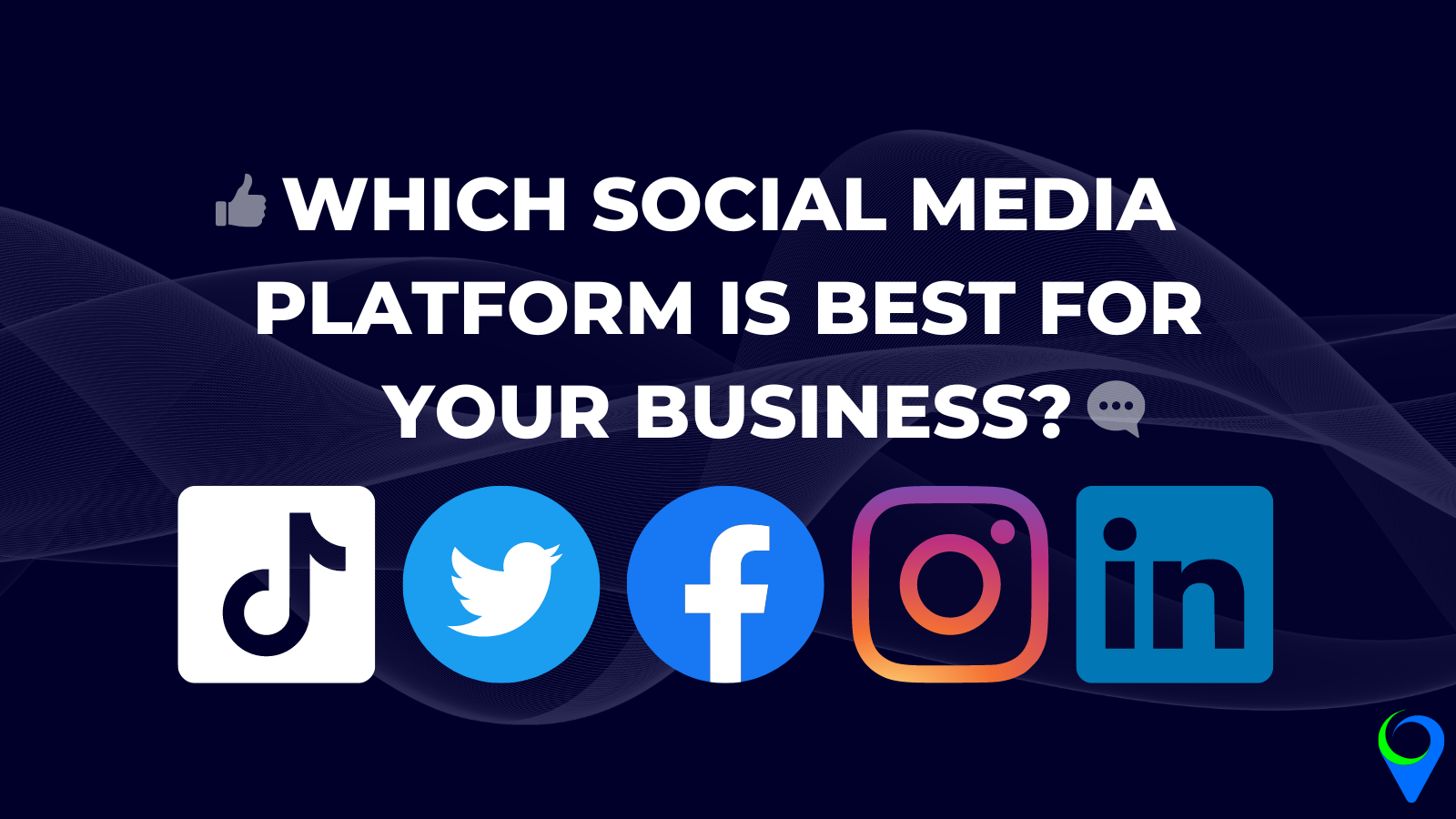How Often Should You Post on Social Media: A Small Business Guide
Running a small business is a full-time job in itself, and finding time for social media can feel like an extra task on the list. But here’s the...
Got a question, or need help with something?
A member of the LoudLocal team is on hand to help you.
The Brickyard, Unit 2, Queen's Rd, Kenilworth, Warwickshire, CV8 1JQ
5 Merchant Square, Paddington, London, W2 1AY
7 min read
Mia Gardner
:
Apr 29, 2025 3:05:25 PM
As we navigate 2025, the algorithms that control our feeds have once again changed and evolved; in this blog, we'll discuss the current state of these algorithms, platform by platform, and provide actionable strategies to boost your organic engagement.
As always, forget the jargon - we're here to help you understand the social media landscape and thrive in 2025. Let's dive in!
‘Social media algorithm’ - you might be thinking, I’ve heard of that, too many times, but what on earth does it actually mean?
Well, think of it like this:
It’s a filter that automatically sorts through all posts and shows you the ones you’re most likely to engage with and/or find most interesting at the top of your feed. This means that if you are engaged with the posts you are shown, you are more likely to stay on the app longer and not lose interest, which is ultimately what social media is all about: keeping you hooked.
In 2025, social media algorithms continue to prioritise User Experience, focusing on relevance, personalisation, and meaningful interactions.
Social media algorithms can significantly impact content reach (how many people your post is shown to), which can cause problems in digital marketing, particularly for small businesses.
Budgets are tight, so you may not be able to pay to boost every post or any of them; trust us, as a small business ourselves, we understand. Not just money, but time constraints can make posting on social media feel like you are trudging through mud… not for much longer. We're going to help you turn this possible barrier into a significant opportunity for you and your small business.
Some people believe that algorithms are purposely designed to encourage businesses to pay to boost their rankings, and in some cases, there is historical evidence to support this. For example, Facebook’s 2018 News Feed update significantly reduced the visibility of business and media content in favour of posts from friends and family, making organic reach much harder to achieve. This shift marked the beginning of a more pronounced “pay-to-play” environment on platforms like Facebook and Instagram.
Organic reach, the number of people viewing your content without paid promotions, is also declining on many, if not all, platforms, making it highly challenging for small businesses to share their content with their target audience. The Social Insider says: “In 2024, Instagram has a reach rate of 4.00% on average, while Facebook scores a 2.60% average reach rate.”, “But while it is true that Instagram generates a higher reach compared to Facebook, it also registers an 18% YoY decrease.”. This is why it's vital to understand and keep up to date with the algorithms.
In the world of social media, not all content is treated equally, and creators often emerge as the winners. While algorithms don’t explicitly favour individuals over businesses, they are built to promote engaging, authentic, and relationship-driven content - the kind that creators naturally excel at. This has led to a growing gap between how well personal brands perform versus traditional business pages. Here’s why creators tend to thrive in today’s algorithm-driven landscape, and what it means for businesses trying to compete organically.
Human Connection Wins
Algorithms are designed to keep users engaged. Personal posts, often from creators, tend to feel more authentic, relatable, and emotionally engaging than branded business content.
Higher Engagement Rates
Creators usually get better engagement per follower because their audiences are built organically around a personality or niche. This signals to the algorithm that their content is valuable.
Overtly Promotional Content Gets Penalised
On platforms like Instagram and Facebook, overly promotional posts (such as "Buy Now" or product shots with no context) may be deprioritised in favour of content that sparks interaction or storytelling — something creators are better at.
Creator Tools vs. Business Tools
TikTok, Instagram, and YouTube now offer extensive tools and insights for creators, showing a shift in platform support towards individuals as mini-brands.
TikTok: Prioritises engaging content regardless of who posts it. But creators naturally do better because they understand the platform’s storytelling format.
Instagram: Reels and Stories from personal accounts often outperform those from business pages, unless the brand adopts a creator-like approach, which is personality-driven and value-first content.
LinkedIn: Still supports individual thought leadership more than company pages.
Facebook: Actively reduced the organic reach of business pages over the years. Community-driven content, such as Facebook Groups, performs better.
X (Twitter): Content performance is less about account type and more about timeliness and engagement, but verified users and high interaction still get boosted.
.png?width=600&height=600&name=Copy%20of%20Blog%20Graphics%20(1).png)
Instagram remains a powerhouse in the social media world for all generations, and it is known for its visually appealing content and engaged community.
Instagram’s algorithm in 2025 is made up of multiple different rankings that depend on where the content is being shown, e.g., in feed, explore, stories or even reels.
Generally, Instagram is great at matching content to your target audience, based on their previous interactions and engagements. Therefore, the relationship between accounts is significant (the user and the creator).
Engagement is a two-way street. Encourage user interaction by crafting compelling captions, asking questions, and responding promptly to comments and messages. By fostering a sense of community, you can strengthen the bond with your followers and boost your content's algorithmic favourability.
A summary of key factors behind the scenes of Instagram:

Here we made a collaborative post with Make Good Grow which allowed our audience and their audience to cross over and widen both of our reaches.
Facebook’s algorithm in 2025 continues to prioritise community engagement, but for small businesses, it increasingly operates on a pay-to-play model. Organic reach for business pages has significantly declined, with content from friends, family, and followed creators taking priority in users’ feeds. However, opportunities still exist for those who can create genuine, engaging content, especially when it's interactive or community-driven.
Lean into participation-based content. Use features like polls, live videos, or question-driven posts to encourage users to respond and interact.
Double down on Facebook Groups. These remain a rare organic goldmine. Create or actively participate in groups related to your brand or niche to build trust and engagement beyond the main feed.
Mix paid and organic strategically. Instead of boosting every post, identify high-performing organic content and run small, targeted ad campaigns to expand its reach.
Add a human touch. Use storytelling, behind-the-scenes glimpses, and personality-rich content to build a connection and avoid coming off as overly promotional.
Avoid the sell. If your post screams “ad” (e.g., salesy language, product-only visuals, little to no interaction), it’s likely to get buried unless you boost it.
Remember, while Facebook may favour advertisers in the feed, quality engagement is still rewarded. The goal is to create posts that spark conversation, feel authentic, and encourage your audience to return — whether you're paying or not. By building a community around your brand and posting with purpose, you can still achieve meaningful visibility and growth on Facebook in 2025.
TikTok has revolutionised the way we consume video content, offering a unique blend of short-form and long-form videos. Short-form videos are ideal for quick, impactful storytelling, while longer videos allow for more in-depth exploration of topics. Balancing both formats can help capture a wider audience and increase your chances of appearing on the For You Page.
In 2025, TikTok's algorithm prioritises content that captivates viewers from the very first second: utilising what creators call a hook.
TikTok remains highly personalised, driven by user behaviour (watch time, completion rate, re-plays…) and content performance. AI continues to refine content recommendations based on individual preferences. To succeed on TikTok, it's crucial to understand what makes content engaging and shareable.
LinkedIn remains the go-to platform for B2B (business-to-business) interactions, offering a professional environment for networking and knowledge sharing. In 2025, LinkedIn's algorithm prioritises content that adds value to professional conversations. To optimise your presence on LinkedIn, focus on creating content that informs, educates, and inspires.
Twitter, now known as X, remains a platform for real-time conversations and instant updates. In 2025, X's algorithm favours content that is timely, relevant, and engaging. To make an impact on X, focus on crafting concise, impactful tweets that capture attention.
%20(1).png?width=600&height=600&name=Copy%20of%20Blog%20Graphics%20(3)%20(1).png)
Depending on the platform, the importance of these 3 major factors will vary - however in all cases they are important to boosting organic reach in 2025.
In the dynamic world of social media, algorithm changes are inevitable. However, they also present opportunities for growth and innovation. By staying informed and adapting your strategy to align with these changes, you can enhance your content's visibility and engagement.
Embrace a mindset of continuous learning and experimentation. Test different content formats, analyse performance metrics, and refine your approach based on what works. By remaining agile and responsive to algorithmic shifts, you can turn challenges into opportunities and drive meaningful growth for your brand.
In conclusion, mastering social media algorithms in 2025 requires a proactive and strategic approach. By understanding the unique characteristics of each platform's algorithm and tailoring your content strategy accordingly, you can enhance your organic engagement and achieve success in the digital landscape. Let's embrace the opportunities that algorithm changes bring and thrive in the ever-evolving world of social media.
If you enjoyed this blog, consider checking out our latest one, The Ultimate Guide to Technical SEO. If you need support with digital marketing, consider checking out our services and scheduling a call with one of our team members.

Running a small business is a full-time job in itself, and finding time for social media can feel like an extra task on the list. But here’s the...

Running a trades business takes a lot of time and energy. You’re busy on site, chasing quotes, and keeping customers happy. But while you’re focused...

If you’re a tradesperson, you already know how competitive it is out there. Whether you’re a plumber, electrician, builder, or landscaper, chances...

What are Brand Guidelines? Brand guidelines are a set of instructions used to create a brand identity which will become easily recognised by the...

GUIDE CONTENTS What Is Social Media? Why Is Social Media Important For Your Business? Facebook Instagram Twitter LinkedIn TikTok Which Platform...

Social media can be a goldmine for small businesses, but only if your campaigns actually work. Too often, business owners spend hours posting content...